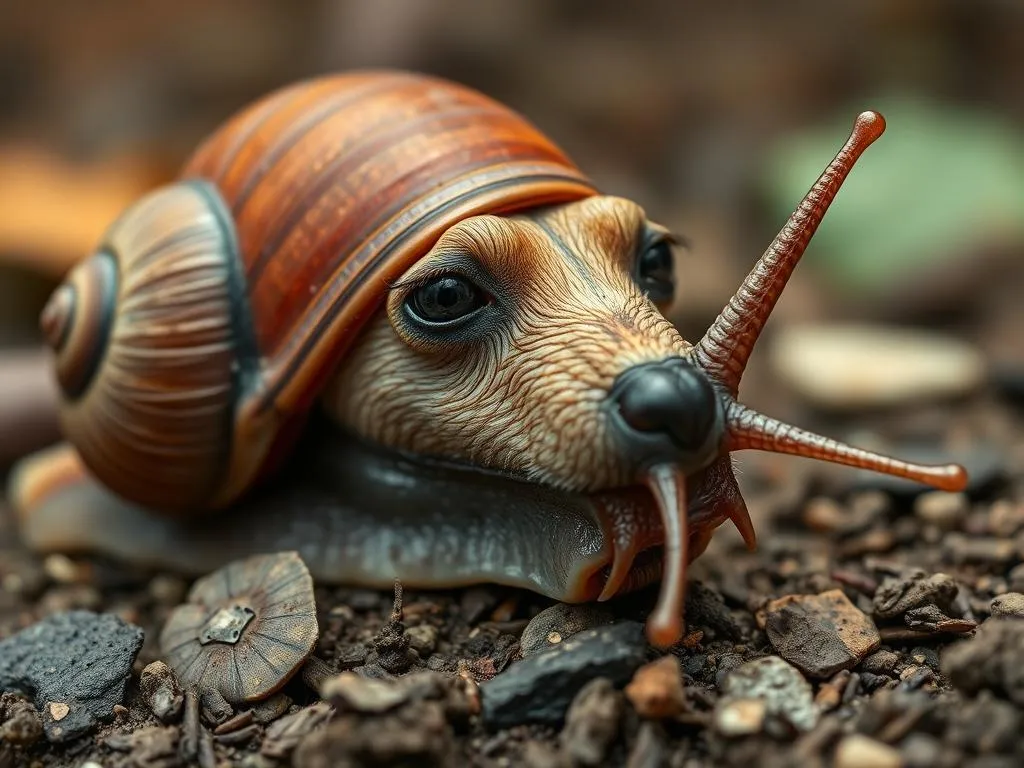
Understanding dog health care is essential for every pet owner, as it helps ensure our furry friends lead healthy, happy lives. One often-overlooked aspect of dog safety involves knowing potential hazards in their environment, including various creatures they may encounter. Among these creatures are snails, which can raise concerns about their toxicity and potential risks to dogs. This article delves into whether snails are poisonous to dogs and provides comprehensive information on how to keep our pets safe from these slippery mollusks.
Understanding Snails
What Are Snails?
Snails are gastropod mollusks characterized by their coiled shells and soft bodies. They belong to a large class of animals and are found in various environments across the globe. Snails can be broadly categorized into three types: terrestrial (land), freshwater, and marine species. Each type displays unique attributes, but they all share a common trait—their reliance on moisture for survival.
Common Habitats of Snails
Snails thrive in moist environments and can often be found in gardens, forests, wetlands, and even urban areas. They tend to be more active during the spring and summer months when humidity levels are higher. During dry spells, many snails will burrow into the ground or seek shelter under rocks and foliage to conserve moisture. This behavior makes them more susceptible to being discovered by curious dogs.
Toxicity in Snails
Types of Snails and Their Toxicity
While most snails pose minimal risk to dogs, some species can be toxic. Certain marine snails, for instance, produce venom as a defense mechanism, which can be harmful if ingested. Symptoms of snail poisoning in animals may include vomiting, diarrhea, and lethargy. It’s crucial to recognize that the degree of toxicity can vary significantly between species.
Are Common Garden Snails Poisonous?
The common garden snail, often found munching on plants in our backyards, is generally not considered toxic to dogs. However, they may still cause mild gastrointestinal upset if ingested. Additionally, some dogs may have allergies or sensitivities that could lead to adverse reactions even with non-toxic snails. As a precaution, it’s advisable to monitor your dog’s health closely after any unintentional snail consumption.
Risks of Snail Ingestion for Dogs
What Happens When Dogs Eat Snails?
When a dog ingests a snail, the digestive process can lead to various reactions. Although the common garden snail is not poisonous, the dog’s digestive system may react negatively to the foreign substance. Symptoms of ingestion may include vomiting, diarrhea, or lethargy. If your dog displays any of these symptoms, it’s essential to consult a veterinarian.
Other Risks Associated with Snails
Beyond concerns about direct toxicity, snails can carry parasites that pose significant health risks to dogs. One notable example is the rat lungworm, a parasite that can cause serious neurological issues if transmitted to a dog. Additionally, snails can harbor bacteria that may lead to infections. Keeping an eye on your dog’s movements and behaviors around snails is crucial for their overall health.
Preventing Dog Exposure to Snails
Dog Behavior and Snail Interaction
Dogs are naturally curious creatures, often attracted to snails due to their slow movement and unique texture. This curiosity can lead to unwanted interactions, especially in environments where snails are abundant. It’s important to closely monitor your dog in areas where snails are present and educate them to avoid such encounters.
Creating a Snail-Free Environment
To keep your yard safe for your dog, consider implementing strategies to minimize snail populations. Here are a few effective methods:
- Regular Yard Maintenance: Keep your lawn trimmed and remove debris where snails like to hide.
- Barrier Methods: Use copper tape or crushed eggshells around the garden to deter snails.
- Pet-Safe Pest Control: Opt for non-toxic pest control options if you need to manage snail populations.
By following these strategies, you can create a safer environment free from potential snail-related hazards.
What to Do If Your Dog Eats a Snail
Immediate Actions
If you suspect that your dog has ingested a snail, it is important to act quickly. Observe your dog for any symptoms such as vomiting or lethargy. If any symptoms arise, contact your veterinarian immediately for guidance.
Veterinary Diagnosis and Treatment
When you consult a veterinarian, they may perform diagnostic procedures such as physical exams or fecal tests to assess your dog’s condition. Treatment options typically focus on symptom management, which may include medications to control nausea or diarrhea. Hydration is also crucial, especially if your dog is experiencing gastrointestinal upset.
Other Common Garden Hazards for Dogs
Introduction to Garden Hazards
While snails are a concern, they aren’t the only hazards lurking in our gardens. Homeowners should be aware of various potential toxins, including certain plants, fertilizers, and pesticides that can be harmful to dogs.
Identifying and Mitigating Risks
To keep your garden pet-friendly, consider these tips:
- Research Toxic Plants: Familiarize yourself with plants that are harmful to dogs, such as azaleas, lilies, and certain types of mushrooms.
- Safe Gardening Practices: Use pet-safe fertilizers and avoid chemical pesticides that can be harmful if ingested.
- Create Safe Zones: Designate specific areas of your garden that are off-limits to your dog.
By taking these precautions, you can help ensure your garden remains a safe place for your furry companions.
Conclusion
In summary, while the question of whether snails are poisonous to dogs can often lead to some concern, most common garden snails pose minimal risk. However, it is essential to remain vigilant about potential hazards in your dog’s environment, including parasites that snails may carry and other common garden toxins. Awareness and prevention are key components of dog health care, ensuring our pets can enjoy the great outdoors safely. For any further concerns about your dog’s health and environmental hazards, consulting with a veterinarian is always a wise step.









